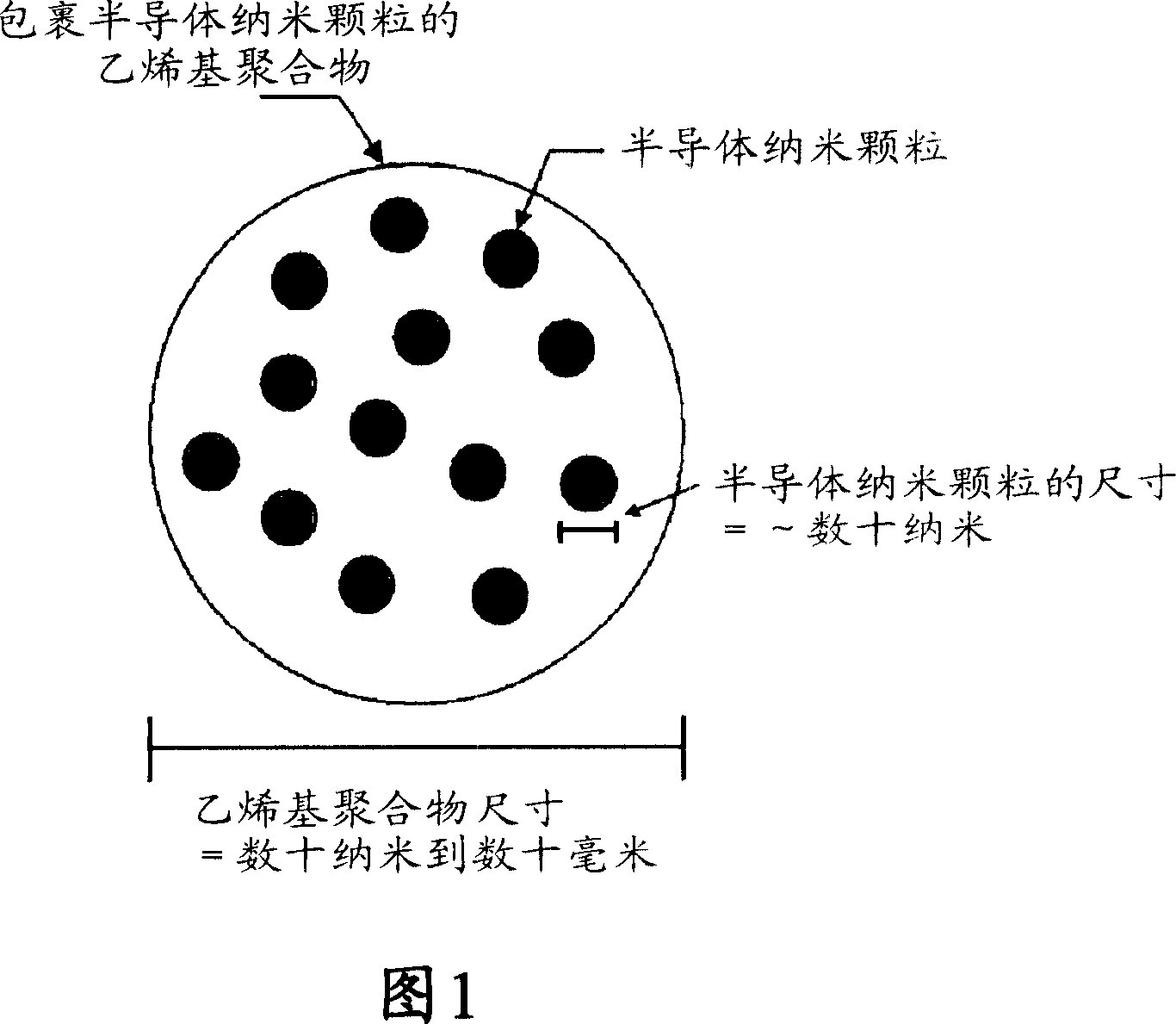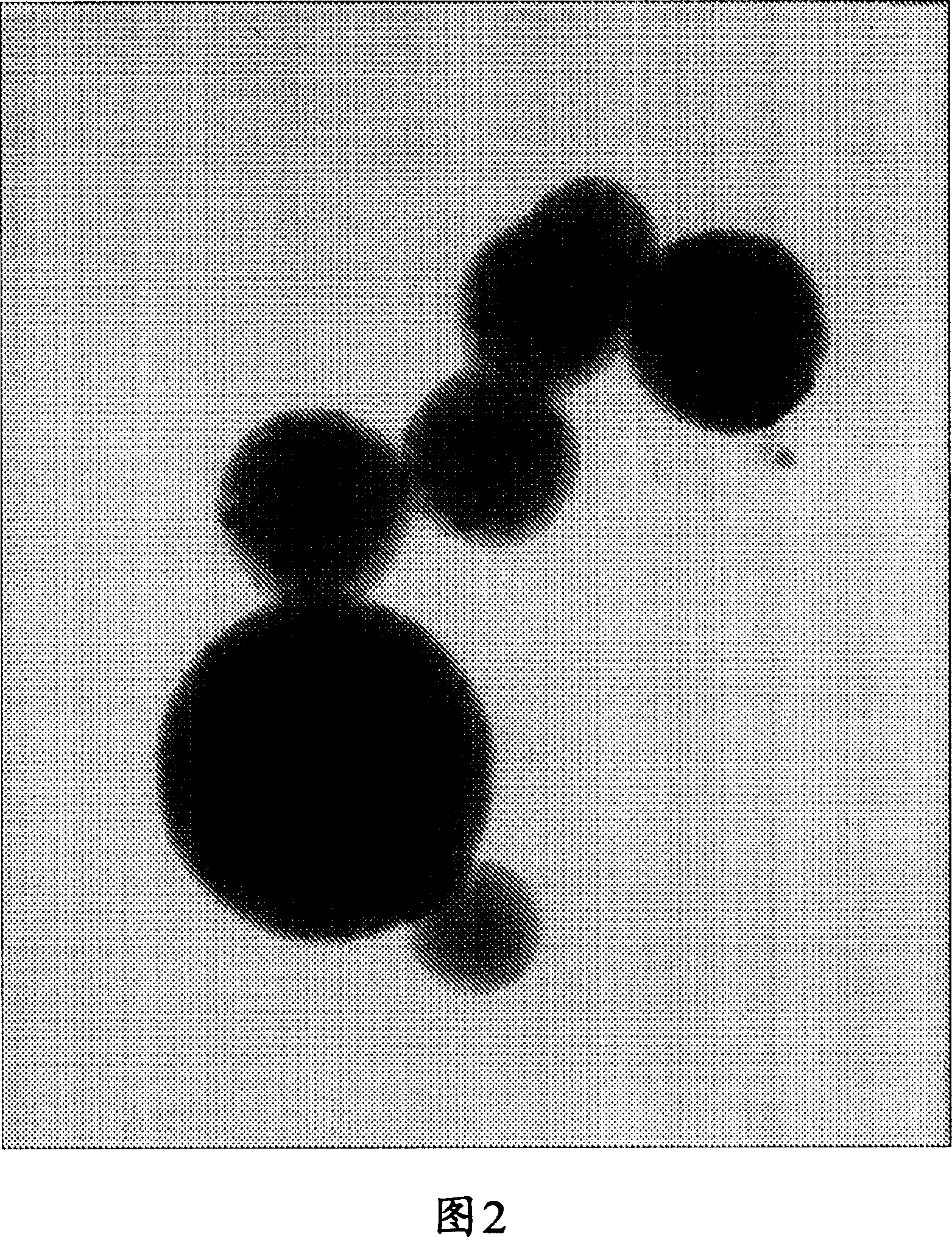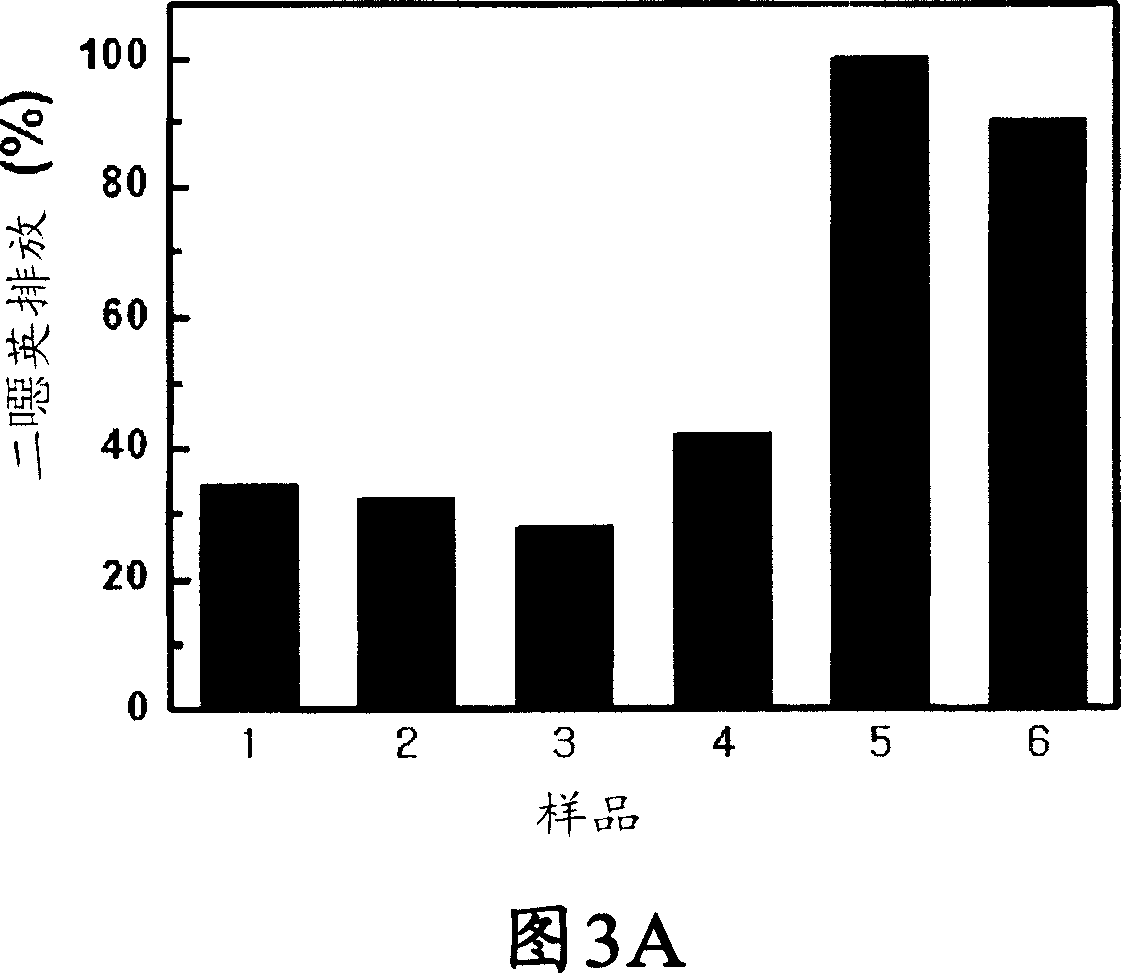Semiconductor nanoparticle-encapsulating vinyl polymer, vinyl polymer mixture includingthe same, and process of preparing the same
A vinyl polymer, nanoparticle technology, applied in nanotechnology, nanotechnology, nanotechnology for materials and surface science, etc., can solve problems such as technical defects, economic difficulties, etc., to improve mechanical properties, prevent migration, The effect of preventing agglomeration
- Summary
- Abstract
- Description
- Claims
- Application Information
AI Technical Summary
Problems solved by technology
Method used
Image
Examples
Embodiment 1
[0077] In this example, a vinyl polymer encapsulating semiconductor nanoparticles was prepared using suspension polymerization. For this, TiO 2 Nanoparticles As semiconductor nanoparticles, styrene was used as the vinyl monomer.
[0078] The additives used in this example are listed in Table 1 below. In Table 1, styrene monomer and polyvinyl alcohol (PVA) were purchased commercially from Aldrich, TiO 2 Nanoparticles were purchased from Degussa under the tradename P25, and azoisobutyronitrile (AIBN) was purchased from Junsei. Using Solsperse 24000 (available from Avecia KK) as a dispersion stabilizer, its number-average molecular weight is several thousand or greater, and a substance such as a nitrogen atom or a sulfur atom with a strong affinity for semiconductor nanoparticles is combined on its main chain, and Has multiple side chains with an affinity for styrene monomer.
[0079] First, stir and dissolve the dispersion stabilizer in the styrene monomer, and gradually add...
Embodiment 2
[0082] In this example, a vinyl polymer encapsulating semiconductor nanoparticles was prepared using emulsion polymerization. For this, TiO 2 Nanoparticles As semiconductor nanoparticles, styrene was used as the vinyl monomer.
[0083] Emulsion polymerization in this example is carried out in the same manner as in Example 1, except that SLS (purchased from Aldrich) is used as an emulsifier instead of PVA used as a surfactant in Example 1, and Potassium persulfate (KPS) (commercially available from Aldrich) was used as the initiator. The constituents and their contents used in this example are listed in Table 1 below. The reaction emulsion was centrifuged at 27000 rpm for 2 hours using a centrifuge to obtain a solid product. The solid product was isolated and dried to obtain encapsulated TiO 2 Nanoparticles of polystyrene powder. DLS analysis and SEM images show that the powder size ranges from tens of nanometers to several micrometers. TEM analysis reveals TiO with avera...
Embodiment 3
[0085] In this example, vinyl polymers encapsulating semiconductor nanoparticles were prepared using dispersion polymerization. For this, TiO 2 Nanoparticles As semiconductor nanoparticles, styrene was used as the vinyl monomer.
[0086] The dispersion polymerization of this example was carried out in the same manner as in Example 1, except that a mixture of ethanol and deionized water (94.5:5.5) was used as a dispersion medium and polyvinylpyrrolidone (available from Aldrich) was used as an emulsifier agent to replace the PVA used as surfactant in Example 1. In addition, in this example, instead of using the dispersion stabilizer (Solsperse) in Example 1, TiO surface-modified with 3-(methacryloyloxy)propyltrimethoxysilane was used. 2 nanoparticles. The constituents and their contents used in this example are listed in Table 1 below. The reaction dispersion was centrifuged at 27000 rpm for 2 hours using a centrifuge to obtain a solid. The solids were separated and dried t...
PUM
| Property | Measurement | Unit |
|---|---|---|
| particle size | aaaaa | aaaaa |
| particle size | aaaaa | aaaaa |
| particle diameter | aaaaa | aaaaa |
Abstract
Description
Claims
Application Information
 Login to View More
Login to View More - R&D
- Intellectual Property
- Life Sciences
- Materials
- Tech Scout
- Unparalleled Data Quality
- Higher Quality Content
- 60% Fewer Hallucinations
Browse by: Latest US Patents, China's latest patents, Technical Efficacy Thesaurus, Application Domain, Technology Topic, Popular Technical Reports.
© 2025 PatSnap. All rights reserved.Legal|Privacy policy|Modern Slavery Act Transparency Statement|Sitemap|About US| Contact US: help@patsnap.com



